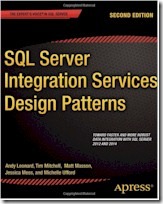Years ago (decades, actually), I was part of a Christian alternative music band called Now eye See Why. We performed mostly original music at coffeehouses, music festivals, and in bars in the Richmond Virginia Fan district. We made a couple recordings and were signed to a small label for a time. I sang backup (mostly) and played guitar, keyboards, and (rarely) alto sax. On a related note, I can’t hear very well nowadays.
That’s NeSW in the picture above: Mark, me, and Dexter from left to right. I think this picture is about 23 years old. Look at that hair!
I learned to play piano some when I was tall enough to see the keys (not over them) – around the age of four. Mom played piano – she still plays and I still love to hear her play. Although we both play “by ear,” we play completely differently and prefer different keys. I enjoy playing the guitar, which I learned at age 16. Learning guitar was easier after years of piano because the keyboard is a visual representation of a music scale. A keyboard lays out all the notes linearly, which also greatly simplifies their relationship: higher notes are to the right, lower notes are to the left. That’s not how guitars work, however.
The guitar I play has six strings. The way I play – and there are other ways to play a six-string guitar – the lowest note is the open sixth string, the topmost string, traditionally tuned to an E. The other strings are tuned at intervals of fourths with one exception, the second string is tuned at an interval of a major-third above the third string. This results in a pattern from sixth to first string: E-A-D-G-B-E.
But there are other ways to tune a six-string guitar.
I won’t go into all the different ways to tune a guitar here. You can click the Wikipedia link above for more information or search YouTube to learn more. Guitar-tuning isn’t really my point in this post. My point is…
Producing Results by Alternative Means
I’m beginning a coaching engagement with a talented data warehouse team. They came to Linchpin People because they have tried to build a data warehouse and not succeeded, and they wanted to know if we can help. We can, and this is going to be a cool engagement because we will be using Business Intelligence Markup Language (Biml) to respond to some tricksy requirements.
Preparing for this gig reminded me of the orchestration involved in performing with the guitar. You see, sometimes – especially when you’re learning guitar – you need to teach the muscles in your fingers to do things they’ve never done before. To “get it right,” you bend yourself to the instrument and the work at hand. It’s an important part of learning, doing things the way the piece of music and instrument requires.
But it’s not the only way to perform.
Changing the Guitar
Once a student has learned how to perform guitar pieces with standard guitar tuning, they may venture into performing with alternative tuning schemes. The most common alternative tuning I use is called “dropped tuning,” where I lower the sixth string from its (already low) E to a D. If you’re playing an electric guitar with distortion, that low D – especially through a Mesa Boogie or Peavey amp with Black Widow speakers – will reach out and rattle your soul! But I digress…
Alternate tunings change the conditions – the chord fingerings and pitch – available to the guitarist. Alternate tunings allow the guitar to produce combinations of sounds that are difficult-to-impossible with standard tuning, producing a combination of ranges that are unique enough to define a song.
Applied to Software…
How does this apply to delivering software solutions?
Using Biml is like retuning the guitar on a massive scale. It allows an SSIS developer to achieve phenomenal results – results that define a project. How?
Biml Speeds Up SSIS Development
If you find you need to produce multiple SSIS packages built to extract, transform, and load data in the same way; Biml is an awesome solution. Rather than copy and paste, Biml provides BimlScript which allows you to create “template-ized” code that will build multiple SSIS packages based on any pattern you spin up. I cover using Biml and BimlScript to produce SSIS packages that use a basic Incremental Load pattern in the Stairway to Biml Levels 2, 3, and 4 at SQL Server Central. You can build several, dozens, or even hundreds of SSIS packages in a fraction of the time it would take to code them manually.
Biml Improves Code Quality
Because Biml and BimlScript rely on patterns to automate SSIS package generation, the packages are not subject to copy and paste errors, or errors of human omission once a robust pattern is realized. If one package works, they all work.
Changing the way we build SSIS solutions with Biml is like using an alternate tuning on the guitar. SSIS developers are able to produce SSIS solutions at ludicrous speed with improved quality!
:{>
Learn more:
Stairway to Biml
Linchpin People Blog: SSIS
Stairway to Integration Services



Thanks. Interested to learn biml